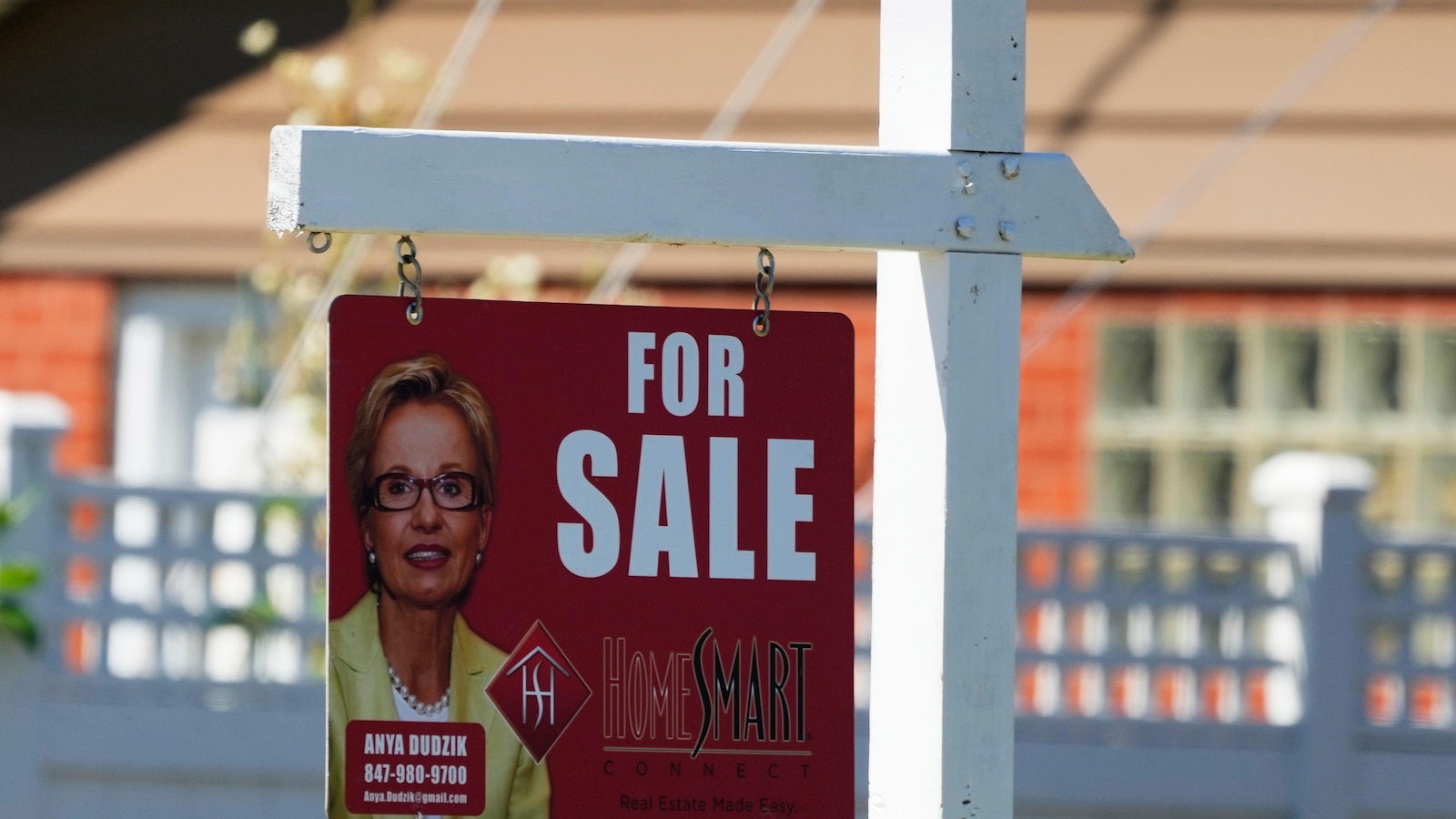
LOS ANGELES — The average rate on a 30-year mortgage rose this week, pushing up borrowing costs on a home loan for the first time since late May.
The rate rose to 6.95% from 6.86% last week, mortgage buyer Freddie Mac said Wednesday. A year ago, the rate averaged 6.81%.
The uptick follows a four-week pullback in the average rate, which has mostly hovered around 7% this year.
When rates rise they can add hundreds of dollars a month in costs for borrowers. The elevated mortgage rates have been a major drag on home sales, which remain in a three-year slump.
Borrowing costs on 15-year fixed-rate mortgages, popular with homeowners refinancing their home loans, also rose this week, pushing the average rate to 6.25% from 6.16% last week. A year ago, it averaged 6.24%, Freddie Mac said.
Mortgage rates are influenced by several factors, including how the bond market reacts to the Federal Reserve’s interest rate policy and the moves in the 10-year Treasury yield, which lenders use as a guide to pricing home loans.
The yield, which topped 4.7% in late April, has been generally declining since then on hopes that inflation is slowing enough to get the Fed to lower its main interest rate from the highest level in more than two decades.
Fed officials have said that inflation has moved closer to the Fed’s target level of 2% in recent months and signaled that they expect to cut the central bank’s benchmark rate once this year.
Until the Fed begins lowering its short-term rate, long-term mortgage rates are unlikely to budge from where they are now.
Economists are forecasting that mortgage rates will ease modestly by the end of this year, though most projections call for the average rate on a 30-year home loan to remain above 6%. That’s still double what the average rate was just three years ago.
“We are still expecting rates to moderately decrease in the second half of the year and given additional inventory, price growth should temper, boding well for interested homebuyers,” said Sam Khater, Freddie Mac’s chief economist.
The elevated mortgage rates and record-high home prices discouraged many would-be homebuyers this spring, traditionally the busiest period of the year for the housing market.
Sales of previously occupied U.S. homes fell in May for the third month in a row, and indications are that June saw a pullback as well.
After months of record-low mortgage rates, the average rate on a 30-year fixed-rate mortgage has increased for the first time since late May, approaching the 7% mark. This news comes as a surprise to many homeowners and potential buyers who have become accustomed to historically low rates in recent years.
According to data from Freddie Mac, the average rate on a 30-year fixed-rate mortgage rose to 6.99% this week, up from 6.87% the previous week. This marks the first increase in mortgage rates in over two months, signaling a potential shift in the housing market.
The rise in mortgage rates can be attributed to a number of factors, including an improving economy, rising inflation, and the Federal Reserve’s decision to taper its bond-buying program. As the economy continues to recover from the impact of the COVID-19 pandemic, inflation has been on the rise, prompting the Fed to take action to prevent overheating.
While the increase in mortgage rates may come as a disappointment to some buyers, it is important to keep in mind that rates are still relatively low compared to historical averages. In fact, just a few years ago, rates were well above 7%, so today’s rates are still considered favorable by many standards.
For potential homebuyers who may be concerned about rising rates, there are still options available to help mitigate the impact of higher rates. One option is to consider a shorter loan term, such as a 15-year fixed-rate mortgage, which typically comes with a lower interest rate. Another option is to shop around and compare rates from different lenders to find the best deal.
Overall, while the increase in mortgage rates may signal a shift in the housing market, it is important for buyers to stay informed and be prepared for potential changes in the future. By staying proactive and exploring all available options, buyers can still find ways to secure a favorable mortgage rate and achieve their homeownership goals.


